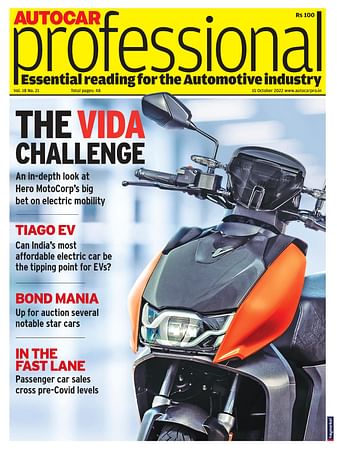Volkswagen plugs in to growing demand for EVs in China
By 2020, Volkswagen plans to introduce seven new locally-produced electric and plug-in hybrid models.
Volkswagen has reported that its BUDD-e, the 2016 CES show car, which is touring China as an ambassador for e-mobility, is drawing a lot of attention. With the concept car, Volkswagen is presenting the next generation of electrically powered vehicles to Chinese motorists.
The German carmaker says, “The Chinese are fascinated by this Volkswagen, which draws visually on the legendary 'Bulli' and thus forms a bridge between the origins of the brand and a time far into the future. BUDD-e is the first Volkswagen based on the new Modular Electric Drive Kit (MEB).” By around the year 2020, the company will launch the MEB models – powerful electric cars with ranges at the level of today's petrol counterparts; the 2016 CES show car has a 533-kilometre range.
China wants to be the leading hub for technology in the areas of electric vehicles and connected cars. electric vehicles (EVs) or New Energy Vehicles (NEVs) as they are called there, sold over 330,000 units in 2015, a huge jump over the 87,000 units sold in 2014. That makes China the second largest EV market in the world. The USA is the largest.
In China, the people are very open to driving electric cars. The environmental conditions in the big cities there can be significantly improved in future through developments such as zero-emission, electrically powered vehicles. The state and major municipalities are promoting electric motoring through a variety of measures. One example: in megacities such as Beijing (21.5 million inhabitants, third-largest city on earth) or Shanghai (at 24 million inhabitants and the world's largest city) the number of newly issued vehicle registration numbers is being limited – however, without a registration number it is not possible to licence a new vehicle.
The wait is therefore very long. However, purchasers of models with plug-in hybrid, electric or hydrogen drive systems receive the coveted registration numbers very much more quickly. The only condition: the vehicles, called New Energy Vehicles (NEV) in China, must be made locally in the country.
Therefore, Volkswagen says it is pushing ahead at full speed with the development of fully and partially electrically powered vehicles. By 2020, seven new electric and plug-in hybrid models will have come onto the market in China, where they are also being produced. Against this background, the carmaker says the BUDD-e is becoming an ambassador for a new kind of high-tech mobility, not only for the drive system, but also the new form of operation and information handling via voice, touch and gesture control, plus large display landscapes.
RELATED ARTICLES
Sept 2024 From R&D incentives to EV infrastructure: What auto components industry expects from Budget 2024
Sept 2024 From R&D incentives to EV infrastructure: What auto components industry expects from Budget 2024
US car majors hit the brakes on driverless cars
Ford Motor and Volkswagen to close self-driving startup Argo AI, due to lack of technology and clear regulations.
Autoliv and Geely to develop advanced safety tech for future vehicles
Scope of cooperation includes safety for high-level autonomous driving, intelligent steering wheel technology, a 360deg ...






 By Autocar Pro News Desk
By Autocar Pro News Desk
 11 Jun 2016
11 Jun 2016
 2783 Views
2783 Views
















